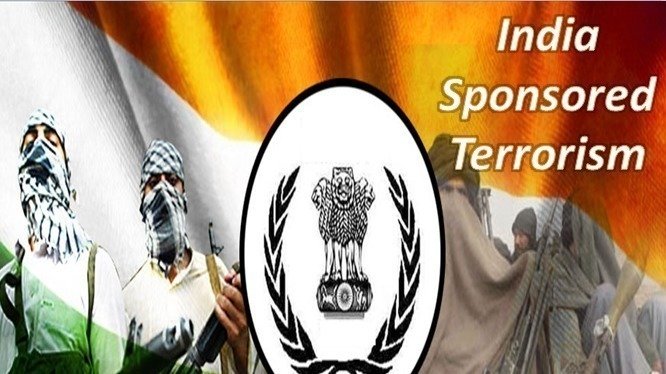By: M. Asad Ullah
Climate Change is defined as an abrupt and long-term change in the global temperature. It has become a global threat to the entire world. It has been discerned that the precipitous changes have taken place in the different parts of the world. Tsunamis, river floods, landslides, etc are the product of climate change. According to the World Health Organization, Climatic changes are annually causing over 150,000 deaths. Given calculation includes deaths due to the extreme weather conditions, which might be taking place with the augmented frequency. Changes in the temperature and rainfall pattern may influence transmission patterns for diseases that are; diarrhea, and vector-borne infections, malaria, etc.
A question has been asked that Is it a real phenomenon? Scientists are divided on this issue, the majority of them perceive it as an existential threat to humanity, and a few are of the view that it’s naturally happening because the climate changes over time. The first one believes that Climate Change is a real phenomenon caused by human activities. The latter one believes, it has nothing to do with human activities. However, if one looks to the last 6-7 decades’ graph of causalities that happened due to environmental insecurity (Floods, landslide, heat waves, etc) endorse the existence of Climate Change.
When it comes to the causes of climate change, then there is not a single cause behind this calamity. There are several causes which played their role in the bringing of climate change, however, the main causes are; growing use of fossil fuels ( utilization of oil, coal, gas, etc to generate electricity), emission of greenhouse gases like Methane, Carbon dioxide, and Nitrous oxide. Burning of plastic, Deforestation, Ozone layer depletion, Overconsumption of natural resources.
Climate change has afflicted drastic effects on many parts of the world as well as on Pakistan. The rise in temperature and the climatic upheavals deteriorate the ecosystems, alter the conditions and cycles of plant reproduction. The Rise in temperature has caused heatwaves in the different cities of Pakistan. Nowadays, it has been observed that the surge in temperature came into sight across the different cities of Pakistan. Several cities have had more than 45 degrees Celsius temperature which is more than the average temperature. Now, the people of Pakistan have come to realize the need for war against climate change.
Pakistan has got more glaciers (7253) than anywhere except the polar region. However, the melting of glaciers is also a great matter of concern because it’s the main reason behind landslideses. Last year, there had been a massive landslide occurred in Gilgit Baltistan and also in the Neelum Valley. It is estimated that 16 people In Gilgit and 59 in Neelum Valley had lost their lives in that deadly landslides. If one looks at the graph of people killed due to landslides, then he/she would get to see thousands of people in the particular graph. The melting of glaciers also causes river floods, as in late May, the chairman NDMA ( National Disaster Management Authority) had warned that the Gilgit Baltistan region to have more snowfall than normal over the winter. More or less 3000 glaciers have configured unstable lakes which may prompt unscheduled deluge, landslides, and snowfall. River floods, cyclones, and tsunamis are the solemn outcomes of climate change
Climate Change has become an existential threat to Pakistan. The schedule of weather in Pakistan has been altered, and weathers get changed in an unscheduled manner. This is the core reason people get infected by noxious diseases. Surveys suggest, if Pakistan wouldn’t take preventive measures to combat climate change, then Pakistan would be more vulnerable to climate change and bound to suffer a lot.
Given concerns show Pakistan’s vulnerability as in the global index, Pakistan ranks as the 4th most vulnerable country to climate change. There are so many reasons, however, her geography is one of the core reasons. Pakistan is located in South Asia, and all the South Asian countries have been facing Climate Change for the last 6-7 decades. It has neither been the topmost priority of the South Asian countries nor the required policies have been made over it.
Climate change and socio-economic development are deeply interlinked. Climate change poses some solemn impacts on these activities. Intensely increasing temperature and heat waves have posed very serious impacts on the production of food. In turn, hike in prices. One can see, Pakistan has become a water-stressed country. Withal, being an agrarian economy, Pakistan can ill afford to be passive in this regard.
It has been observed that the incumbent government of Pakistan is willing to overcome this calamity. In their first reign (KP government 2013-2018) they paid massive attention to this cause; constructed minor dams, billion tree plantation campaigns, and urban forestation was a remarkable initiative. Pakistani premier Imran Khan has taken this threat into consideration and paid enormous attention to this cause. Whether addressing to UNGA session or to the people of Pakistan, he always stresses this threat and asks for a global response to counter the very cataclysm. The current regime of Pakistan has adopted a strong policy over this issue; notably, renewable energy projects, prevention of usage of the plastic bags, urban forestation, constructing dams, Ten Billion Tree Tsunami Programme (TBTTP), etc.
PM Imran Khan on Sunday shared an info-graphic on his Twitter account that shown the number of trees per person in other countries of the world. According to the chart, there are 10,163 trees per person in Canada, 4964 trees per person in Greenland, 3266 trees per person in Australia, 699 trees per person in the United States, 230 trees per person in France, 130 per person in China, 47 trees per person in UK, 28 per person in India, and 5 trees per person in Pakistan. Moreover, he urged all Pakistanis, especially the youth, to prepare themselves for the “biggest tree planting campaign in Pakistan’s history” ahead of the monsoon season this year. Well, this won’t be enough to subdue the very threat, however, environmental security must be ensured.
Environmental security is the relationship of environmental elements to national security. The Securitization of the environment is the need of the hour. Pakistan may apply the Securitization model against this calamity. The model provides the scope in which issues can be plotted as non-politicized, politicized, and securitized. According to this model when the securitizing actor ( state’s leadership) perceives a threat as an existential threat to the referent object, then the process of Securitization takes place. In the view of traditionalists, the state is always the Referent object, however, when it comes to environmental security, then the endangered species and ecosystem are the referent objects.
Securitization begins with a speech act concerning a peculiar threat. The speech act tries to shift a threat from normal politics to a security concern. Through the speech act the securitizing actor may secure the referent object (ecosystem and endangered species). This model may turn out to be a successful move for the state of Pakistan to restrain the environmental issues.
Environmental issues are the global threat.So they should be treated globally. As Pakistan’s premier in the UNGA had also urged for the collective response against environmental crises. It’s a matter of great concern that all suffering states collaborate with each other in this regard. If the entire world could fight against the Novel COVID-19, then what refrains them to fight against environmental crises in a collective manner.
When it comes to the national level, our state has to make drastic laws/policies over this cause. The state has to inculcate the significance of the war against climate change to the masses. National level policies may involve awareness, preventive measures, implementation over law, forestation, etc. Speech act would be a great tool in making the masses aware of this calamity. People will get aware as well as will start securitizing the environment on their own.
The state of Pakistan has to take preventive measures against this disaster. No relief has been given to the businessmen, politicians, industrialists, etc in their environment harming activities. Banning plastic bags, kiln/brickyard should be imposed truly. Arborists must be halted from cutting down trees. There are numerous people in Pakistan whose sources of income are linked with the aforesaid occupations. The government ought to generate new jobs and alternatives of such occupations. So that the people wouldn’t get unemployed nor they would harm the environment.
It has been discerned that our government has made particular laws, and in our constitution there are a few laws regarding the environment. However, people don’t follow laws nor they act upon it. Now, the implementation over laws is also a challenge to the incumbent regime. The more implementation of laws in society, the more environmental security will prevail.
Over the period of time, it has been experienced that the making of housing societies in the place of forests are frequently taking place in the urban areas. So now, urban forestation/reforestation is the best way to preserve the environment. The government must ensure that 25% of the land be granted for forestry. Now, the state won’t only have to discourage deforestation, but also will have to make strict laws over this matter of concern. Moreover, it’s the responsibility of the individuals to get themselves enrolled in the Ten Billion Tree Tsunami Program. Everyone should take part in this activity and ensure its success.
To sum, it’s crystal clear that climate change has posed an existential threat to Pakistan. Now, it’s up to us whether we take it as a solemn threat or take it a minor threat. Securitization model will pave the way for the amelioration of the environment. A global threat like climate change must be dealt with globally, and all the states must ensure cooperation with each other over this cause. If every Pakistani realizes the vulnerability and follows the guidelines/laws concerning the environment, then we can overcome this threat. Everyone has to accept the responsibility and has to be an environmentally friendly citizen.
The writer is a blogger and student of International relations at NUML and can be reached at [email protected].



